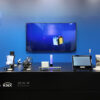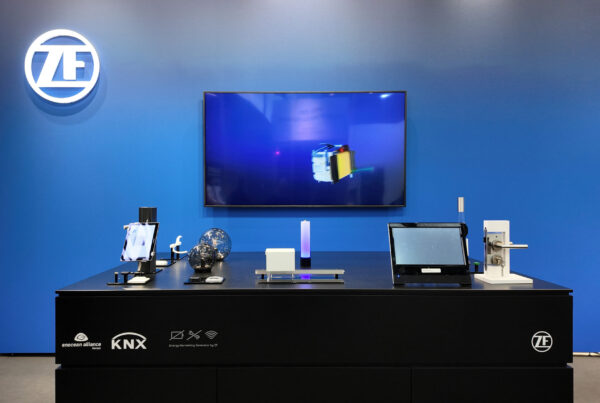
Wireless KNX Infrastructures
Extract from ‘Heimautomation mit KNX, Dali, 1-Wire und Co.’ by Stefan Heinle
A smart home installation usually starts with a wired bus system. In some applications RF based KNX is a suitable addition especially when adding to an already existing wired KNX system (KNX TP).
Advantages of KNX-RF:
- Integration into ETS (and ETS-Inside) without gateway
- No media interruption, completely compatible to KNX TP/IP/PL
- Appropriate for new constructions and renovations
- Suitable for residential and non-residential buildings
- Energy efficiency and security
- Decentralized functions
- Products are available in the ETS online catalogue
- International worldwide standard (EU 868 MHz)
Here are some examples of applications where the use of KNX RF devices are beneficial.
If you:
- Forgot something in the KNX TP planning (e.g. if you would like to use a sensor or actuator) where no KNX wire is available)
- Would like to mount tactile sensors on mobile walls (e.g. office)
- Need an RF socket in an easy and flexible position
- Would like to have a mobile handheld transmitter for alternative switch actuations
- To (temporarily) create new switch options in children’s rooms
KNX-RF uses the 868 MHz frequency band for the transmission of telegrams and reaches a range of up to 100 m in free field. In buildings, this frequency band also has good characteristics in terms of signal distribution, since the damping by walls, concrete reinforcements, and metal parts is limited. If the signal must pass through walls and ceilings, the damping and the RF range depends on the number, the type, and the consistency of construction material as well as the thickness, of the walls and ceilings (see following table).

Table 1: Damping of different construction material
Not all KNX-RF is alike. Not all products are compatible to each other. The products from ZF use the KNX RF Ready S-Mode but there are also products that use the Easy Mode standard, and are therefore not compatible to S-Mode components and also cannot be configured via ETS.
The following table shows the KNX RF S-Mode products that are currently available on the market:

Table 2: Range of KNX RF S-mode devices
The pushbutton module AFIM-1010 from ZF is the worldwide first KNX RF pushbutton module with its own power supply that can be configured via ETS5. The integrated battery-free generator creates enough energy to generate the KNX RF telegrams. The RF module is already available in series production and comes ready to install. It is compatible with standard frames and panels for energy harvesting light switch modules and can also be combined with customer-specific designs and control panels.
Source: Stefan Heinle – Heimautomation mit KNX, Dali, 1-wire und Co. – Das umfassende Handbuch, 2. Revised and updated edition 2019, Rheinwerk Verlag
For more information visit: https://www.heimautomation-buch.de/








